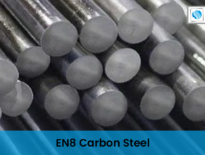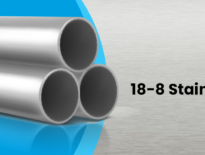Mild steel, or low-carbon steel, is incredibly versatile and widely used around the globe. Its flexibility, ease of welding, and machinability make it ideal for numerous applications. From the construction of skyscrapers and cars to the creation of fences and signs, mild steel plays a crucial role in many aspects of daily life. This common yet remarkable metal is integral to a wide range of industries and products.
What is Mild Steel?
Mild steel, also known as low-carbon steel, is a widely used iron alloy with a primary composition of carbon. Its broad application stems from its affordability and adequate strength, combined with excellent machinability and weldability. Mild steel’s versatility makes it suitable for various uses, from construction to everyday objects.
Different grades of mild steel have varying carbon levels, influencing their strength and ductility. Higher carbon content increases strength but can reduce flexibility. Some grades also include additional alloying elements to improve specific properties like tensile strength, corrosion resistance, and wear resistance.
What is the Composition of Mild Steel?
Mild steel is primarily composed of iron (Fe) with a small amount of carbon, typically less than 0.2%. This low carbon content contributes to its flexibility and ease of use. In addition to carbon, mild steel often includes manganese (Mn), which improves its strength and hardness. The specific composition can vary slightly based on the grade and intended application, but these elements form the core of mild steel’s properties.
Mild Steel in kg/m3, g/cm3, lb/in3
The density of mild steel is as follows:
7.85 g/cm³ (grams per cubic centimeter)
7860 kg/m³ (kilograms per cubic meter)
0.284 lb/in³ (pounds per cubic inch)
This consistency in density is due to mild steel’s composition, which is predominantly iron (over 98%), with small amounts of alloying elements like carbon, manganese, and silicon. The density is closely related to the density of iron itself, which is approximately 7.87 g/cm³. Mild steel alloys may show slight variations in density based on their specific alloying elements.
What Are the Different Grades of Mild Steel?
Mild steel comes in various grades, which are classified by the AISI (American Iron and Steel Institute) numbering system. Grades start with “10,” signifying low carbon content. The last two digits indicate the carbon percentage, multiplied by 100. For instance, a grade labeled as 1018 contains approximately 0.18% carbon. Mild steel generally has low levels of phosphorus and sulfur to avoid impurities that could affect its properties. These grades are chosen based on the specific mechanical requirements and intended use of the steel.
| Classification | Approximate Equivalents | Key Points |
| AISI 1008 | DIN 1.0204 | Excellent cold formability |
| AISI 1010 | DIN 1.0301 | Low strength, used for magnet cores |
| AISI 1015 | DIN 1.0401 | Wear-resistant, good machinability |
| AISI 1018 | DIN 1.0419 | Excellent for carburizing applications, good machinability |
| AISI 1020 | DIN 1.0044 | A good balance of strength and ductility, |
Mechanical Properties of Mild Steel
| Type of Mild Steel | Modulus of Elasticity (GPa) | Brinell Hardness | Ultimate Tensile Strength (MPa) | Yield Strength (MPa) | Elongation at Break (%) | Steel Density kg/m3 |
|---|---|---|---|---|---|---|
|
Type of Mild Steel
AISI 1008 |
Modulus of Elasticity (GPa)
200 |
Brinell Hardness
95 |
Ultimate Tensile Strength (MPa)
340 |
Yield Strength (MPa)
285 |
Elongation at Break (%)
20 |
Steel Density kg/m3
7.87 |
|
Type of Mild Steel
AISI 1010 |
Modulus of Elasticity (GPa)
205 |
Brinell Hardness
105 |
Ultimate Tensile Strength (MPa)
365 |
Yield Strength (MPa)
305 |
Elongation at Break (%)
20 |
Steel Density kg/m3
7.87 |
|
Type of Mild Steel
AISI 1015 |
Modulus of Elasticity (GPa)
205 |
Brinell Hardness
111 |
Ultimate Tensile Strength (MPa)
385 |
Yield Strength (MPa)
325 |
Elongation at Break (%)
18 |
Steel Density kg/m3
7.87 |
|
Type of Mild Steel
AISI 1018 |
Modulus of Elasticity (GPa)
205 |
Brinell Hardness
126 |
Ultimate Tensile Strength (MPa)
440 |
Yield Strength (MPa)
370 |
Elongation at Break (%)
15 |
Steel Density kg/m3
7.87 |
|
Type of Mild Steel
AISI 1020 |
Modulus of Elasticity (GPa)
186 |
Brinell Hardness
121 |
Ultimate Tensile Strength (MPa)
420 |
Yield Strength (MPa)
350 |
Elongation at Break (%)
15 |
Steel Density kg/m3
7.87 |
|
Type of Mild Steel
S275 J0 |
Modulus of Elasticity (GPa)
205 |
Brinell Hardness
121 |
Ultimate Tensile Strength (MPa)
430 – 580 |
Yield Strength (MPa)
275 |
Elongation at Break (%)
21 |
Steel Density kg/m3
7.85 |
|
Type of Mild Steel
S355 J0 |
Modulus of Elasticity (GPa)
210 |
Brinell Hardness
146 |
Ultimate Tensile Strength (MPa)
510 – 680 |
Yield Strength (MPa)
355 |
Elongation at Break (%)
20 |
Steel Density kg/m3
7.80 |
Chemical Composition of Mild Steel
| Classification | Carbon Content (% Weight) | Secondary Alloying Elements (% Weight) |
|---|---|---|
|
AISI 1008 |
<0.1 |
0.3 to 0.5 Mn; 0.04 P; 0.05 S |
|
AISI 1010 |
0.08 to 0.13 |
0.3 to 0.6 Mn; 0.04 P; 0.05 S |
|
AISI 1015 |
0.13 to 0.18 |
0.3 to 0.6 Mn; 0.04 P; 0.05 S |
|
AISI 1018 |
0.14 to 0.2 |
0.6 to 0.9 Mn; 0.04 P; 0.05 S |
|
AISI 1020 |
0.17 to 0.23 |
0.3 to 0.6 Mn; 0.04 P; 0.05 S |
|
S275 |
0.18 |
1.5 Mn; 0.030 P; 0.030 S; 0.012 N; 0.55 Cu |
|
S355 |
0.2 |
1.6 Mn; 0.030 P; 0.030 S; 0.012 N; 0.55 Cu |
Mild Steel Grades Applications
Mild steel, valued for its versatility, is used in numerous applications across different industries. Its common uses include:
- Automotive Industry: Car bodies and parts due to its formability and cost-effectiveness.
- Construction: Rebar for reinforcing concrete and structural components.
- Manufacturing: Furniture, wire products, and fasteners.
- Industrial: Enhanced-strength mild steel is used for constructing storage tanks and structural frameworks.
These applications benefit from mild steel’s balance of strength, weldability, and machinability.
Toughness of Mild Steel: Mild steel is known for its toughness, which is its ability to absorb energy without breaking. This property varies by type and grade, and it’s often measured using the Charpy impact test. For example, 1020 mild steel has a Charpy impact strength of 24 J at 10 °C, indicating its good energy absorption and resistance to fracture.
Strongest Mild Steel Grade: Among mild steel grades, 1020 is considered the strongest due to its higher carbon content. This increased carbon provides greater strength but reduces ductility.
Melting Point of Mild Steel: Mild steel melts at temperatures ranging from 1450 to 1530 °C. The exact melting point can vary depending on the specific carbon and alloy content of the steel grade.
Weldability of Mild Steel: Mild steel is highly suitable for welding. Its grades, especially those with silicon and manganese, are known for their good weldability. Common welding techniques include using stick welding machines (Shielded Metal Arc Welding) with ER70S-3 & ER70S-6 rods, making mild steel a versatile choice for various welding applications.
18/8 stainless steel is also known as Type 304 stainless steel. The naming system for stainless steels is complex, involving multiple factors such as chemical composition, microstructure, and standards set by organizations like the American Iron and Steel Institute (AISI) and the International Organization for Standardization (ISO). Stainless steel grades are usually designated by numbers or alphanumeric codes, reflecting the alloy’s elemental composition and properties. Alloying elements like chromium, nickel, molybdenum, titanium, silicon, nitrogen, and copper determine the specific characteristics and designation of each stainless steel type.
Summary
This blog explored mild steel, covering its definition, key properties, and various grades. For more information or inquiries about mild steel, please reach out to a representative at Solitaire Overseas.
FAQs
What is the density of mild steel in kg m3?
The density of mild steel is 7,860 kg/m³. This measurement represents the mass of the steel per unit volume.
What is the current density of mild steel?
The current density of mild steel is 7.85 g/cm³ or 7,860 kg/m³. This density is consistent due to its high iron content, with carbon, manganese, and silicon in smaller amounts.
What is a mild steel?
Mild steel, also known as low carbon steel, contains between 0.05% and 0.25% carbon by weight. This low carbon content gives it good ductility and weldability, making it suitable for various applications like construction, automotive parts, and everyday objects.


